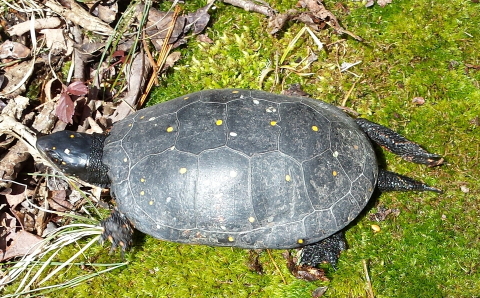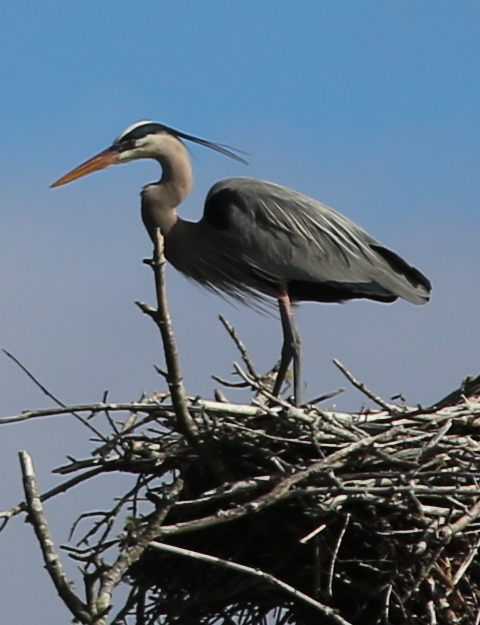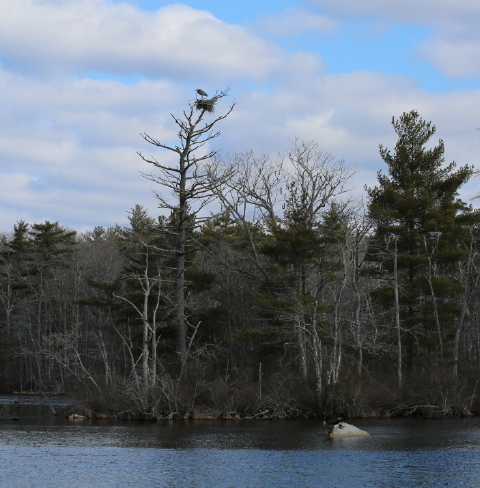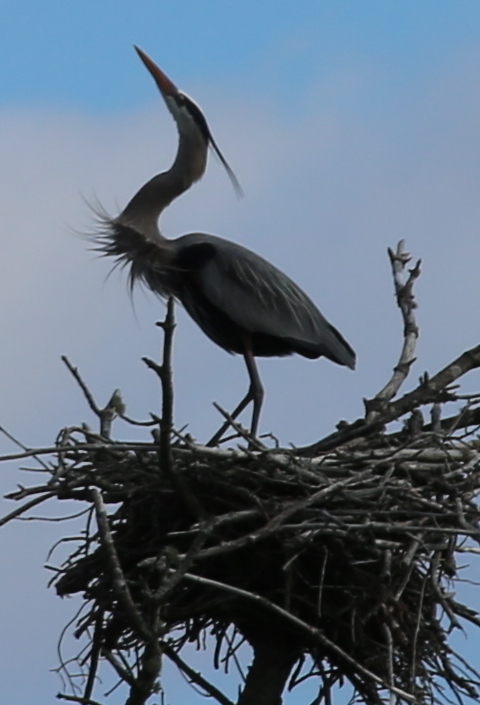Courting Great Blue Heron Pair at SouthCoast Rookery
Great Blue Herons swoop through the air with blitheful grace, so unexpected for such a large and seemingly awkward creature. Yet, if aerial ballets amaze, their Geisha-like courtship movements atop the trees precariously balanced on teetering twigs stuns the senses.Â
In this early stage of seasonal courtship as pairs return to the rookery and before preparing the nest for this year’s chicks, ritual behavior ensues each time the male returns to the aerie. Loving tenderness is expressed in elegant poses so gentle, so sweet and so dramatically effective.
(All images can be enlarged by clicking on the picture, which will open in a separate window.)
Courting Behavior as Male Great Blue Heron Returns to Nest
When the greeting ritual ends, the mating pair begins a grooming phase with the same loving tenderness as demonstrated below.
Great Blue Heron Pair Grooming
With the courting ritual temporarily behind them, they can refocus on preparing the nest for eggs, incubation and chicks. The next two months will be a busy time for this pair.
Great Blue Heron Pair Settle Down to Nesting
Yet, even in the busy-ness of nest preparation, there’s always time for a gentle peck to reinforce the couple’s bond.
Love’s in the Air:Â Great Blue Herons at SouthCoast Rookery


























